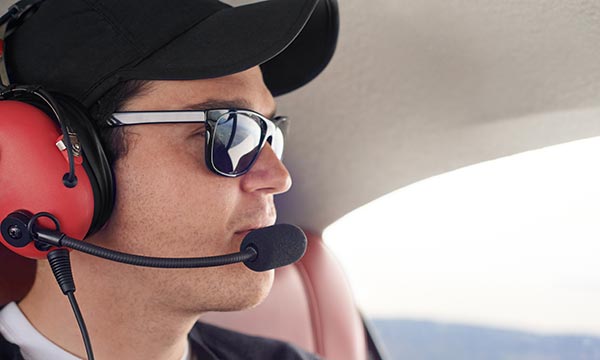
Civilian Programs 
Traditional pilot training programs follow an aviation authority’s regulations and guidance to earn certificates and ratings in a required progression. These programs use ground and flight training to enable a pilot to continuously build on knowledge and skills.
Opportunities for pilot training are available at:
- Colleges or universities,
- Local airports with a local flight school or fixed base operator, or
- Dedicated training centers that are “pilot career” focused.
Although you can obtain the certificates and ratings necessary to become an airline pilot in all three of these training environments, the extent to which the training is coordinated and compressed to avoid training gaps can vary broadly. Professional pilot training in the United States, regardless of where it is obtained, can be conducted following one of two regulatory constructs under the Code of Federal Regulations (CFR).
The first of these regulatory constructs, 14 CFR Part 61, includes the regulations that a training facility can use without Federal Aviation Administration (FAA) approval. The FAA does not actively track flight training quality or manage Part 61 flight training curriculums. Instead, the FAA’s written examination and flight tests are designed to ensure that the applicants for certificates and ratings meet both the minimum training requirements and the necessary knowledge and skills to qualify for the certificate or rating that is being pursued.
The second regulatory construct, 14 CFR Part 141, is an optional set of regulations that serve as the framework for FAA-approved training schools. Part 141 flight training organizations must obtain and maintain an FAA certification, which in part requires an approved flight training curriculum. Training provided under Part 141 is generally considered higher quality due to its additional structure and increased FAA oversight as compared to Part 61. Some flight schools conduct training under Part 61 in a manner structured similarly to Part 141 but without FAA certification and oversight. While Part 61 training and Part 141 training result in the same certificates and ratings, the added structure of 141 can better prepare the student for a training environment similar to the training environment at an airline.
Likewise, the training provided by a college or university is generally considered higher quality training because the institution submits to an accreditation process designed specifically to measure the quality of its professional pilot programs. In addition, if the college or university qualifies as an institution of higher education as outlined in 14 CFR Part 61.160, the training is considered to be of an even higher quality, which benefits the pilot after training is complete.
Many college/university professional pilot programs qualify for credits toward the minimum of 1,500 flight hours required to qualify for an Air Transport Pilot (ATP) certificate. The credit is 250 hours for a two-year college degree program and 500 hours for a four-year program. With these credits, you can qualify for and obtain a restricted ATP (R-ATP) certificate, which allows you to serve as a first officer for an airline with as little as 1,000 hours’ total flight time. Note that the specific major/focus must also be approved to receive the 500 hour or 250 hour credit. Not all four-year aviation programs qualify for the 500-hour credit and may only credit 250. See the FAA's list of universities that offer flight-time reduction.
ALPA supports these rules and policies and believes they provide appropriate incentives for future airline pilots to select a college/university pathway, which ultimately results in a well-trained, highly motivated pilot. In fact, ALPA has established professional development and/or mentoring programs at several colleges/universities and visits dozens more each semester. More on university outreach.
No screening requirements currently exist to be admitted into any of the modular pathway programs beyond qualifying for a third-class medical/student pilot certificate. However, prospective pilots must meet additional entry requirements to get into college/university programs (SAT and/or ACT scores, minimum high school grade point average, etc.), just like any other college degree program.
If you choose one of these civilian routes, you must obtain an ATP or R-ATP certificate after earning the private and commercial pilot certificates plus an instrument rating, multiengine rating, and often a flight instructor rating. Obtaining the licenses and ratings in a sequential order ensures that you develop the necessary skills and maturity to make decisions in increasing levels of responsibility. More on qualifications.
Once you hold the commercial certificate, you are qualified to seek employment in entry-level commercial flight operations. You can pursue a wide variety of options, such as charter or corporate pilot, flight instructor, or scheduled air taxi pilot, among other options. More on types of jobs.
There is a wide range of time associated with the civilian program pathway. From the first day of training until you complete training for a commercial license and then build the flight experience necessary to reach ATP or R-ATP certificate, the amount of time needed varies dramatically. Typically, you should anticipate a period of 2–6 years.
Path 2: Military Pathway>

